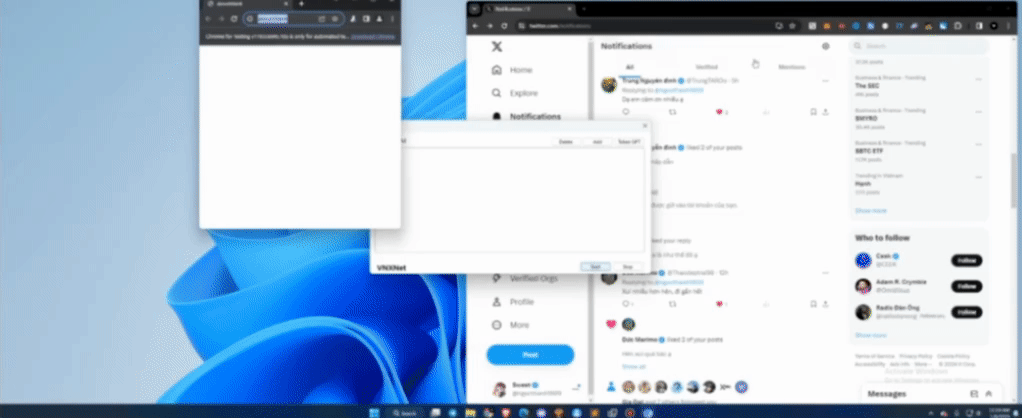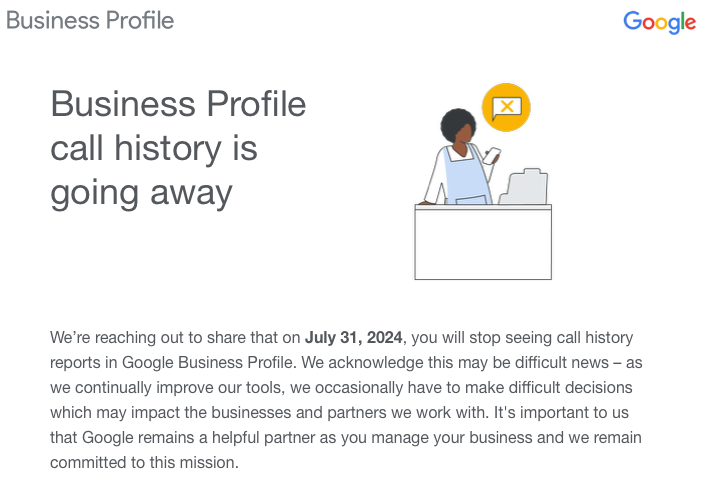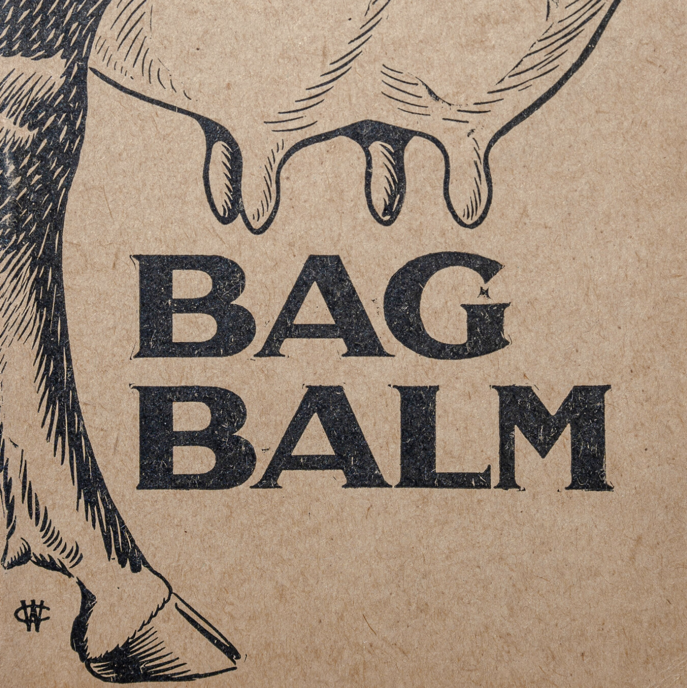Hey, everyone. There’s lots of news this week. The NWS issued its first ever warning for DVD-sized hail in Texas a few days ago. Grapefruits were used for comparison on rare occasions in the past. We don’t normally feature the weather in this newsletter, but we thought it was worth mentioning the fact that citrus is no longer sufficient to describe the ice falling out of the sky.
There’s a lot of marketing and advertising news to get to too. The Google Business Profile team emailed us on Tuesday to say that call logging will fall by the wayside in two months. That revelation would anchor this email most weeks. It’s barely an afterthought today. Still, if this is a feature that you or your clients have been utilizing, you can head to takeout.google.com and export your call history (in much the same way that you can export any and all account data from that page; take a moment to check it out–whether or not you own or manage a Business Profile–if you’re unfamiliar with the data that Google lets you download).
We’ll get to the 2,500 pages of leaked Google Search documents shortly. First, we wanted to shed some light on an advertising fraud ring that is openly ripping Twitter off. It’s called VNXNet and its operators brazenly tweet about “taking money out of Musk’s pocket.” This fraud ring exploits the fact that revenue sharing on Twitter is based on total impressions.
The best way to explain VNXNet is by comparing it to lemwarm, a service that automatically sends, opens, and replies to lots of gibberish emails between Gmail accounts. The goal is to simulate account use and engagement over the course of a few weeks. This makes Google’s algorithms believe that the warmed up accounts are authentic, thus ensuring a high deliverability rate for, say, a cold email campaign.
 The VNXNet ringleader account got suspended yesterday, but the fraud network is still up and running. It promises $300 returns for each participating verified account. From what we can tell, VNXNet is actually delivering on its guarantees by simulating impressions with botted traffic (you can see the VNXNet software running in the screen recording above this paragraph). The main reason we bring this up in today’s newsletter is to warn you not to spend a dime advertising on Twitter– the fake traffic on that site is incalculably rampant. This fifteen minute video explains the situation in much more detail.
The VNXNet ringleader account got suspended yesterday, but the fraud network is still up and running. It promises $300 returns for each participating verified account. From what we can tell, VNXNet is actually delivering on its guarantees by simulating impressions with botted traffic (you can see the VNXNet software running in the screen recording above this paragraph). The main reason we bring this up in today’s newsletter is to warn you not to spend a dime advertising on Twitter– the fake traffic on that site is incalculably rampant. This fifteen minute video explains the situation in much more detail.
Let’s talk about Google’s 14,000 ranking signals that leaked on 2,500 pages of documentation this week. A man named Efrain Azimi is publicly taking responsibility for the leak. The bravery of this claim cannot be questioned but its wisdom is another matter. We have no intention of listing the revelations here, but we’ll talk about the big picture takeaway: none of the tips in Google’s SEO Office Hours videos are trustworthy. The same is true for essentially all communications from the Search Liaison team (about ranking suggestions, anyway– you can certainly believe their announcements about things like core updates and upcoming or soon-to-be-canceled features, etc).
We’ve hinted at mismatches between Google’s public statements and the available data for years. In fact, the first newsletter that we posted to our blog in late 2022 has a reaction to a Search Liaison team member saying that blog guest posts don’t work: “the problem with that answer is that the guest post ecosystem only exists because they work. Make up your own mind.” The quote is just above a picture of Elon Musk.
Google has been speaking out about this leak missing a lot of important context and they’re right to do so. Without knowing the quantities involved or when to mix what with what, a list of Jolly Rancher ingredients would be insufficient if your goal was to recreate the candy. Similarly, we don’t currently know how ranking factors are weighted against each other or in what order they’re used to sift through results. Still, knowing all 14,000 ranking considerations is far from worthless.
If you do want to dig into the particular ranking factors that are now floating around the internet, we recommend starting with this Search Engine Journal article for those of you who prefer to read or this Nathan Gotch video if you’d rather watch/listen to something. If you just want to dive into the actual list of all 14,000 ranking signals, Dixon Jones went to the trouble of indexing all of them: https://dixonjones.com/google-ranking-signals/. Thanks, Dixon.
Although the previous paragraph was purely a vehicle for links, we’re going to kick off our other closing links now. You know what’s going viral on TikTok these days? Bag Balm. It’s a moisturizing product that was formulated for cow udders, but influencers are swearing by it. You can find it in Tractor Supply retail locations or GQ magazine. Next, from Vox, we have an article called Your favorite brand no longer cares about being woke. Many companies saw what Bud Light went through last year and have no intention of stepping on a landmine themselves, which is why you’re not seeing any ads or sponsored posts with stances on polarizing matters these days. Finally, from Hootsuite, How Many Instagram Stories Should You Post?
Have a wonderful weekend. We’re looking forward to reaching out to you again next Friday.


